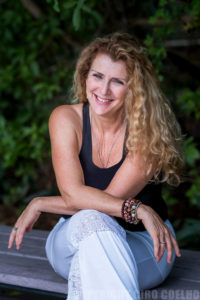Many people have heard the phrase “trying to change the outside, to change the inside.” Or the 12-step slogan “there’s no geographic cure.” Usually, these dismiss the concept of making changes on the outside to guarantee life feeling differently internally, essentially redirecting people to emphasize inside change. In reality, though, we’re an open system. What is happening outside ourselves impacts the lived experience inside, and vice versa. Critically we need to step outside of this culture’s repetitive messaging, which claims, “but if you just figure out how to make the outside better…” everything will feel more positive, aligned, and confidence-boosting internally. The key is acknowledging the impact that the outside experience has, while at the same time learn how to master the internal reactions those experiences generate. To Masterfully move through changes and choices, we want to get the facts and realities involved in our choice, notice our internal response to them, discern what our reactions are about, face them head on, and then carefully consider all options until there is a readiness to act.

Definition of discern: borrowed from Latin discernere “to separate, divide off, distinguish,” from dis- DIS- + cernere “to sift, discern, decide, determine”
As many of you know, I recently moved back to California but decided to keep my Florida home. I did this because I wanted to discern the myriad of potential outcomes; to feel through, and actually live life in California again. I had no illusions that returning to a place I had missed for the nearly two decades would magically make life “perfect.” It hasn’t. But being in a fluid state of exploration here has helped me to notice my nervous system experiencing a deep, inner settling which never occurred while I was in Florida. That tells me something- for my home there was a beautiful sanctuary, surrounded by terrific neighbors and a short bike ride to warm Caribbean waters. Does this mean I’m going to put my Florida home on the market ASAP. Nope. For I also want to live through, experience and sense what it is like to return to the sub-tropics and be closer to my son again, after being in the Bay Area. This is a choice where I’m bringing a lot of discernment and spaciousness, and that approach alone generates relief and ease.
When one moves from a paradigm of deciding towards discerning, the life choices you’re considering include the lived, experienced response to different options in your life on every level. Deciding is often a mental game. There is this faulty belief that we can find a landing place, a solid, steady arrival point where everything becomes easy, predictable and positive. I’ve never seen that happen for a person. Change is a constant. However I have seen people approach significant choices in their life through discerning what feels true, right, and aligned for them, and consequently step into a life which is more centered, expansive and lighter. The difference is that there’s no expectation of an arrival point that is absolute perfection. Instead there’s an inside deliberation towards a preferred, more engaging outcome on a life decision- fully knowing that the process of choice making is ongoing.

Here are some tips on how to change your decision-making approach from having to make the “right decision” towards discerning which choice is “optimal right now”:
- When considering an option, imagine it in detail, then notice your body’s response. Does it feel like energy rises and expands or contracts and gets heavy?
- Come up with a simple construct to evaluate this succinctly, i.e. “thumbs up/thumbs down,” or “red, green or yellow light.” It’s amazing how quickly your body will give you feedback.
- Let go of any idea that there’s a perfect, right choice which has no ramifications. Every choice has an impact.
- Weigh out pluses and minuses of any choice that you are considering and imagine them being played out over time, is there a sense of gaining a lived experience which is “right and true” for you?
- There is rarely only one good choice. Sometimes it’s helpful to see the pros and cons of a couple options written out on paper.
- Even with the most thoroughly discerned approach, certain choices will be painful, difficult or have some negative impacts. Pain leads to growth and strength if embraced.
- And, if the mindset is that challenges are to be learned and mastered, versus avoided, then nothing becomes a bad choice.
- Discerning means that you involve the felt experience in the body, it does not preclude gaining all the facts about any choice. Make good use of both facts and feelings.

